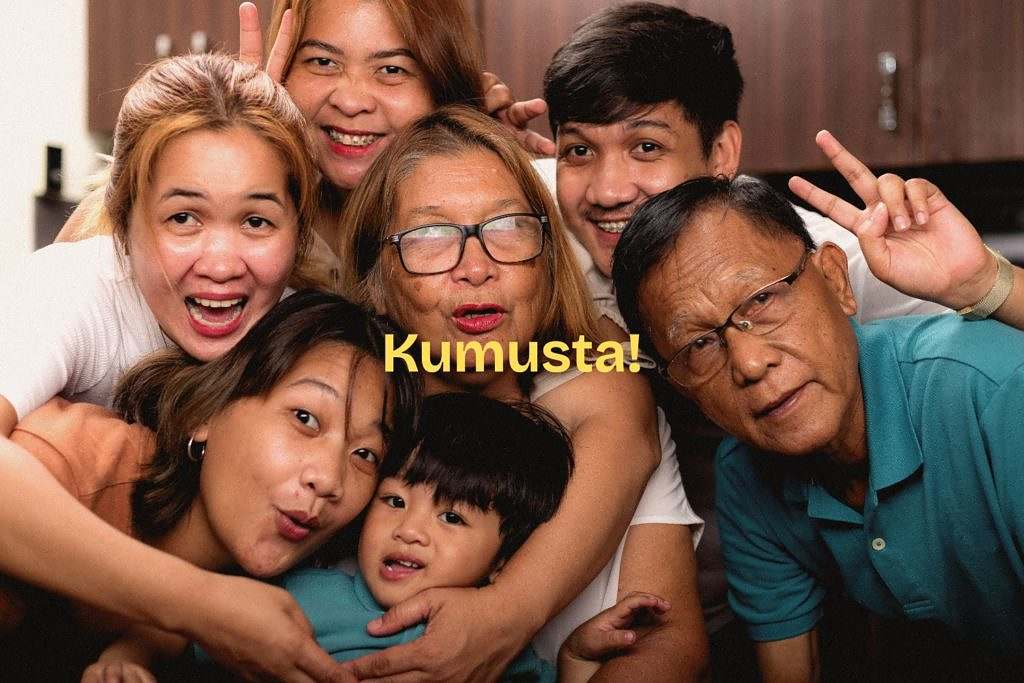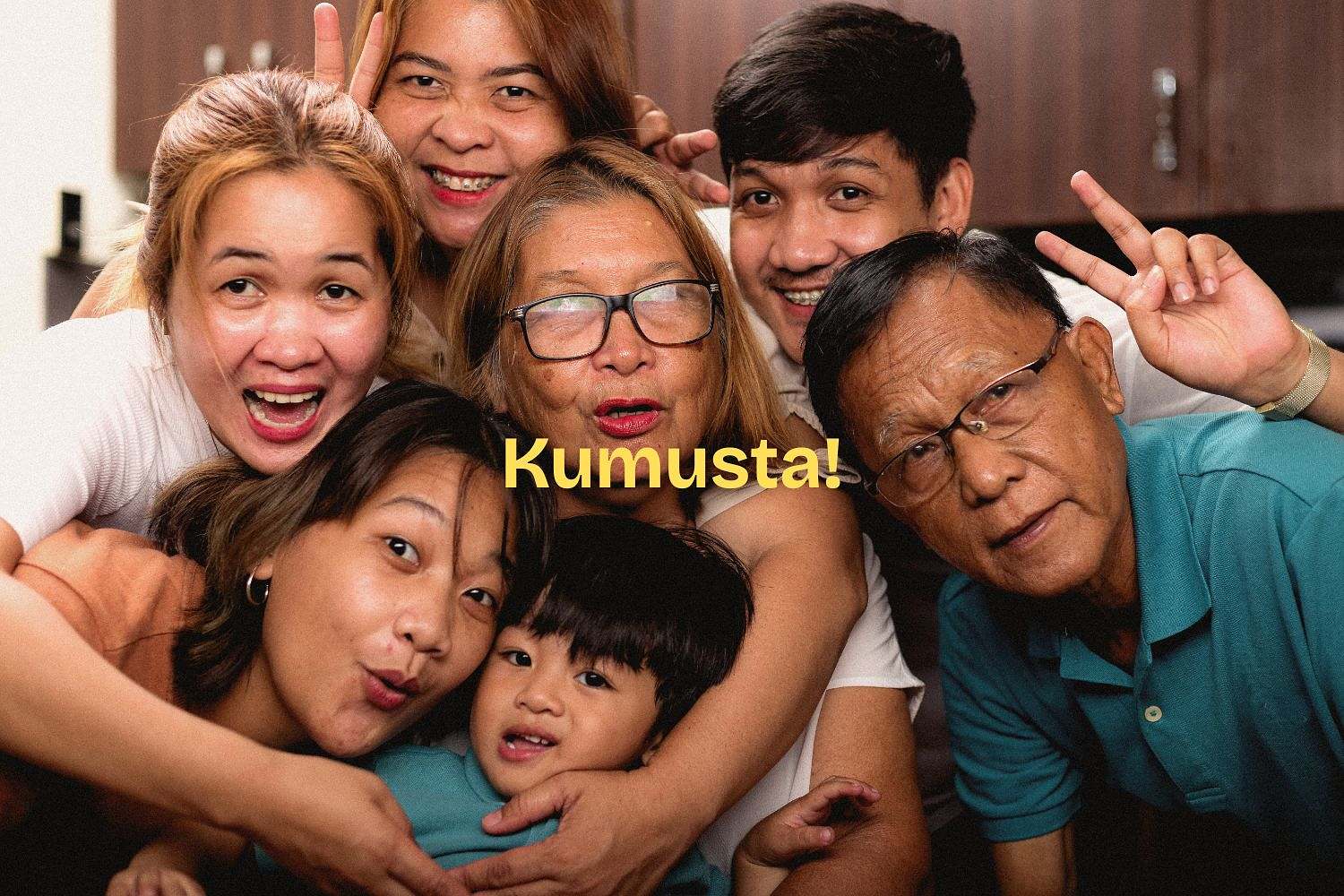How to Say Hi in Filipino (and Other Fun Things You’ll Want to Know Before Visiting the Philippines)
So you’re thinking about traveling to the Philippines? Or maybe you’ve been binge-watching Filipino Tiktoks and wondering what “Mabuhay!” means? Either way — welcome to your crash course in sounding smart, friendly, and maybe even a little charming in the Filipino language.
Spoiler alert: It’s easier (and more fun) than you think.

Wait… What Language Do Filipinos Speak?
Okay, let’s clear this up first.
Filipino people speak Filipino — shocking, right? But here’s the twist: Filipino is based on Tagalog, one of the country’s many native languages. It’s the official language alongside English (yes, Filipinos are basically bilingual superheroes).
Fun fact: If you know a bit of Spanish, you’ll feel right at home here. About 20% of Filipino vocabulary comes from Spanish — thank you, history!
Example:
“Mesa” (table)
“Zapatos” (shoes)
“Kumusta?” (from Spanish ¿Cómo está?) = “How are you?”
So if you were worried about feeling lost — relax. The Filipino language loves borrowing words. It’s like the cool friend who speaks a little bit of everything.
How to Say Hi in Filipino (And Sound Like a Local)
Let’s start with the classic:
Hi! = Hi!
Yep. Filipinos often just say “Hi!” — English works just fine.
But if you want bonus points (or make your Filipino grandma cry happy tears), say:
Kumusta! (pronounced: koo-moos-tah)
It means “How are you?” — but it’s also used casually like “Hi!”
If you want to level up:
Kumusta ka? = How are you? (to one person)
Kumusta kayo? = How are you all? (to a group)
How Do You Say Thank You in Filipino?
Be ready to say this a lot — Filipinos love kindness and good manners.
Thank you = Salamat
Feeling extra sweet?
Salamat po — “Po” adds respect. It’s like saying “Thank you, sir/ma’am.”
Want to be dramatic (because why not):
Maraming salamat! = Thank you very much! (Literally: “Many thanks!”)
How Do You Say I Love You in Filipino?
Ready to flirt? Or just want to make your Filipino partner melt?
Easy.
I love you = Mahal kita (pronounced: mah-hahl kee-tah)
Bonus:
Mahal also means “expensive.”
So technically your love is priceless. Or just very costly. Choose your vibe.

How Do You Say Good Morning in Filipino?
Start your day like a true local:
Good morning = Magandang umaga! (pronounced: mah-gan-dang oo-mah-ga)
Want to impress even more?
Magandang hapon! = Good afternoon
Magandang gabi! = Good evening
Simple formula:
Magandang = Good
Add the time of day. Boom — you sound like a native.
How Do You Spell Filipino?
This one’s fun. It’s spelled:
Filipino (for people/language from the Philippines)
Not Phillipino. Not Filippino. Definitely not Philopeno (yes, I’ve seen it happen).
For a Filipino woman, you can say Filipina — but Filipino is commonly used for everyone now.
Is Filipino Similar to Spanish?
Short answer: Kind of.
Long answer: Filipino has Spanish roots, but it’s mixed with native Tagalog grammar and words from English, Chinese, and even Sanskrit.
Think of it like a language buffet — the best of everything.
Example:
Filipino numbers 1 to 10 are almost pure Spanish:
Uno, dos, tres, cuatro… (you get the idea).
But the sentence structure is very different from Spanish.
Final Tip: Just Smile and Try!
Filipinos LOVE it when foreigners try to speak their language — even if you butcher the words (it happens). It shows respect. And humor is a big part of Filipino culture.
Worst case? You’ll make a new friend.
Best case? You’ll be invited to karaoke. And trust me — that’s a Filipino experience you don’t want to miss.
Quick Filipino Cheat Sheet for Travelers:
| English Phrase | Filipino Translation | Fun Tip |
|---|---|---|
| Hi | Hi / Kumusta | Add a wave & a smile! |
| Thank you | Salamat / Salamat po | Always say po for respect |
| I love you | Mahal kita | Use carefully 😉 |
| Good morning | Magandang umaga | Works with a cup of coffee |
| How are you? | Kumusta ka? | Ask this everywhere! |
| Goodbye | Paalam | Or just say “Bye!” |







